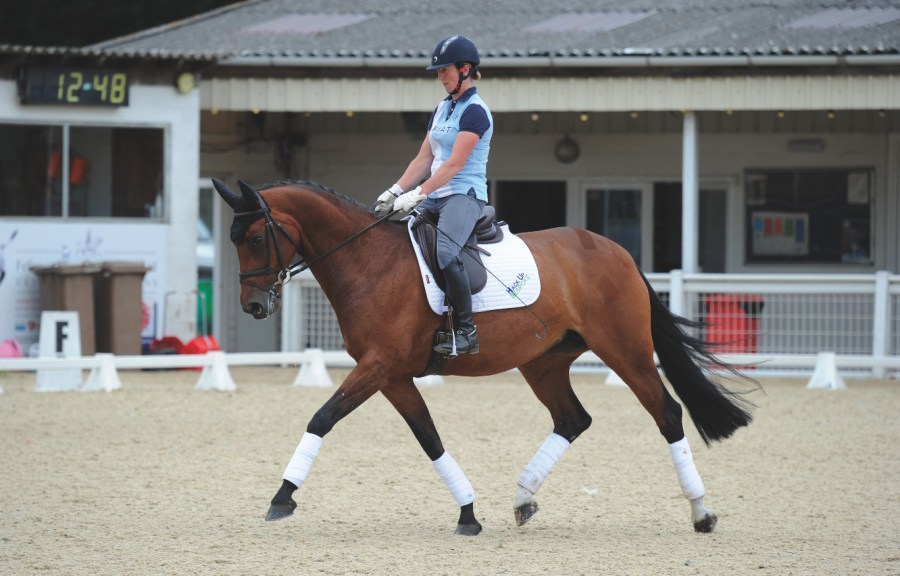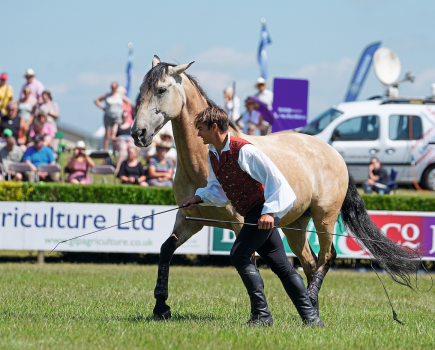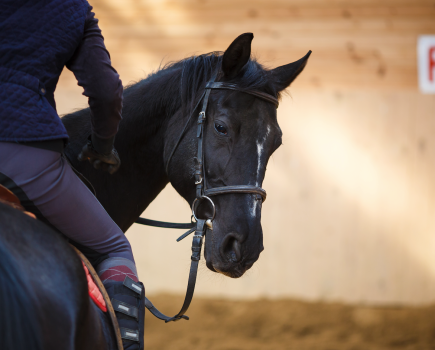Lighten your horse’s stride and help them move their weight to their hindquarters with this balancing workout from international dressage rider Bobby Hayler.
Have you ever been told your horse is not balanced? The signs are easy to spot. An unbalanced horse will have trouble staying straight on the centre line and falls out on a circle.
To improve the situation, you’ll need to teach your horse to move their weight from their forehand to their hindquarters. By moving their weight back, it will lighten both their front end – which means their stride will flow – and their back, which in turn makes them more supple. The true mark of a balanced horse is when they can bend correctly on a curve.
Did you know…
- Improving balance helps to keep your horse sound.
- Natural balance varies from horse to horse, but younger horses take a while to develop consistent balance.
- Balance comes from the hindleg into a steady contact, which allows the horse to become uphill through their core and back.
- Horses have habitual (unconscious) patterns of standing and moving with and without a rider.
You’ll use the full arena for this exercise, so set out your dressage markers before you start. It’s important to warm up correctly and cool down properly to avoid injury or strain.
Exercise 1
Time: 15 minutes
Warm up your horse around the length of the arena, varying between walk and trot on both reins. Include a few serpentines to get them focused and listening to our leg. When you’re both warmed up, begin by walking large around the arena.
- At your first marker ride a 10m circle in walk. When you return to the outside track, continue to walk around the arena.
- At the next marker, halt and ask your horse to stand still for 15 seconds.
- Continue around the arena in walk. When you reach your next marker, ride another 10m circle.
- Repeat this circle-stop-circle pattern all the way around the arena.
- Repeat the exercise on the other rein.
On the circles, use your inside leg to push your horse out and lift up through the shoulder. Make sure you keep your outside rein supportive so your horse doesn’t drift off the 10m circle.
Exercise 2
Time: 15 minutes
This exercise helps your horse respond more quickly to the changes in your seat.
- Go large around the arena in trot.
- At B, ride a 20m circle.
- Include a few forward and back transitions on the circle, extending and shortening your horse’s trot stride.
- Repeat a maximum of five times – fewer if your horse isn’t fully fit and they’re struggling.
- Change the rein and ride a 20m circle in the other direction, incorporating the same transitions.
- Take a five-minute break, walking large around the arena on a long rein.
- Pick up the contact and prepare to ride a 20m circle again, this time in canter.
- Include forward and back transitions so that you lengthen and shorten your horse’s canter stride.
- Change the rein and repeat in the other direction, making sure you do an equal number of circles both ways.
As you’re riding this exercise, lighten your feet and sit slightly forwards – as though you’re starting to move into a light seat – and exaggerate your rising movement in the saddle.
In time, your horse will learn to respond to your movement.
Meet the expert: Bobby Hayler is a grand prix dressage rider who competes and instructs from her base in north east Yorkshire. Bobby competed at Pony, Junior and Young Rider Europeans and now rides at Grand Prix level.
Love hacking? Join our free #Hack1000Miles challenge and see how far you can go!
Subscribe to Your Horse Magazine









